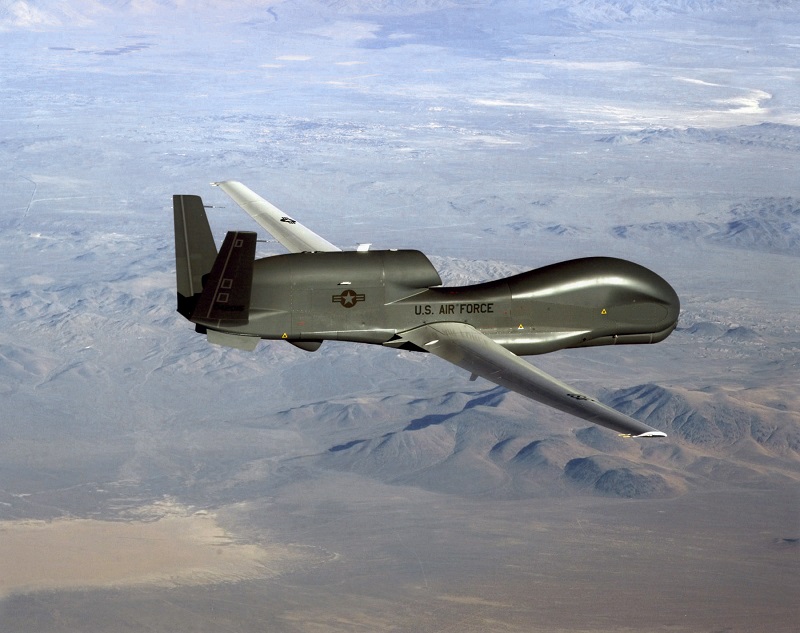Falls Church, VA-based Northrop Grumman Corporation announced on October 29 that it successfully completed a flight control test of a NASA Global Hawk from its Grand Sky facility near Grand Forks, North Dakota.
Following takeoff of the NASA Global Hawk by a crew at NASA Armstrong Flight Research Center (AFRC) in California on Oct. 10, 2019, the flight team at Grand Sky took control and executed a series of flight maneuvers to demonstrate operational performance of the Transportable Operations Center in its Grand Sky Mission Control Center. The in-flight test control operation is a first for the Grand Sky facility which was opened in April 2017.
“The ability to conduct flight operations shows the capability of the Grand Sky team to provide full command and control from our facility. In the near future, we expect to provide full flight test capability to support our government and commercial customers,” said Kristen Griffin, strategy director, autonomous systems, Northrop Grumman. “The important work performed at Grand Sky supports the evolving needs of our customers while advancing research and development of our autonomous systems capabilities for today and the future.”
The flight took off and landed at NASA’s AFRC at Edwards Air Force Base where the remainder of the flight was controlled. NASA and Northrop Grumman are partnered under an agreement which allows for use of the NASA Global Hawk system to explore new mission capabilities.
The Grand Sky facility is dedicated to fostering autonomous systems and other capabilities at the Grand Sky Unmanned Aerial Systems Business and Aviation Park. The facility serves as a nucleus for research and development, pilot, operator and maintainer training along with operations and mission analysis, and aircraft maintenance.
The company is building a hangar adjoining the facility to take advantage of Grand Sky’s access to the adjacent Grand Forks Air Force Base, home to the RQ-4 Global Hawk high altitude, long endurance autonomous aircraft.
Source: Northrop Grumman








